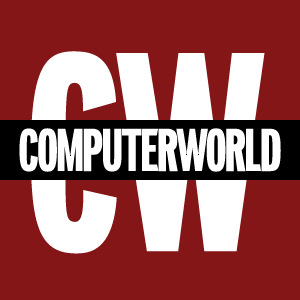Keyboards are essential to work with a pc system whether or not it is for coding, writing, or transferring round gadgets in a spreadsheet. They permit entry to a pc’s peripherals and are used to get deep into the working system of any pc. Keyboards are available in all sizes and shapes. Some are extra comfy to make use of than others. We requested our group members to share the perfect (and the worst) keyboard they’d ever used. Among the solutions would possibly shock you!
Prime 4 favourite keyboards
Keyboards rank proper after editors and languages on the official checklist of issues that programmers argue about.
My favourite keyboards:
- NeXT Prolonged Keyboard: With the pipe in the fitting place.
- Apple Macintosh II Prolonged Keyboard: These buckling springs felt nice!
- IBM Mannequin M: Oh what a joyous noise!
- Tokyo 60 HHKB (Pleased Hacking KeyBoard) package: Simply the keyboard I at all times needed.
—Erik O’Shaughnessy
Two-handed format
Most likely essentially the most obscure keyboard could be the Maltron one-handed keyboard I ended up utilizing for a number of months whereas recovering from RSI—it was truly actually good to make use of when you study the place the keys are!
Picture by:
(Ruth Cheesley CC BY-SA 4.0)
My favourite keyboard of all time is the one I at present have, the Kinesis Advantage2 LF. I’ve mapped it as shut as I may get to the Maltron two-handed format (which is a bajillion instances extra environment friendly, after getting re-mapped your mind to a unique format). Took me a couple of yr to be totally environment friendly, however I can nonetheless use my arms so it was well worth the onerous work!
Picture by:
(Ruth Cheesley, CC BY-SA 4.0)
I wrote about turning into a bilingual typist here and did a mini video sequence charting my progress in studying one-handed typing (whereas studying the way to report movies for work!) which is on YouTube.
—Ruth Cheesley
All of the feels
I purchased a Logitech MX Keys wi-fi keyboard at the start of the pandemic and I simply love the texture and responsiveness of the keys after I kind. It is by far my favourite keyboard of all time.
—Will Kelly
Plug-and-play
Picture by:
(Miriam Goldman CC BY-SA 4.0)
The most effective keyboard is my present one. It is a Logitech K850 and it pairs with a mouse. It is wi-fi and is not an enormous drain on batteries. It comes with a pleasant little pad for the heel of your hand, and when you prop it up with the stand, it finally ends up being on the excellent peak. I haven’t got a lot time to spend configuring my peripherals, so having this be plug-and-play is unbelievable.
—Miriam Goldman
Nostalgic keyboards
Most likely my favourite quirky keyboard to make use of is a DIY 7-key chorder based mostly on this design (nice for wearable computing initiatives the place you need a totally purposeful keyboard that leaves one among your arms free). You could find some photographs from mine at varied levels of prototyping, together with BoM and open (GPL 3.0) schematics and PCB etch here.
I even have a nostalgic fondness for the IBM Mannequin M. You want a specific form of powered PS/2 to USB converter with a purpose to use one on fashionable machines.
I’ve at all times needed a Symbolics Lisp “House-cadet” however they’re fairly onerous to return by. Maybe sometime…
Whereas it isn’t even remotely low-cost, I really like my 3″ RGB underlit SUZOHAPP trackball. It is like I am taking part in Centipede at my workstation!
I wired it up with three RGB backlit arcade buttons (obtainable from the identical provider) in order that it operates similar to a 3-button mouse in my XWindows session.
—Jeremy Stanley
The most effective keyboard
I’ve a Vortex Race 3 with Cherry MX Silver switches and it’s the greatest keyboard on this planet (in my view). My solely grievance is that it has an outsized Esc key, so it is onerous (mainly unimaginable) to search out enjoyable new keycap units for it. If I ever improve, it will likely be to the same keyboard with half-height throws and the identical switches.
—Deb Richardson
Low cost and cheerful
The most effective low-cost, cheerful fashionable keyboard I’ve discovered is the A4TECH KV-300H. It weighs greater than most keyboards and provides the closest really feel to a laptop computer. It has a built-in USB hub too!
—Leigh Morresi
Curvy keyboards
I at all times liked my authentic Microsoft Pure keyboard. The Microsoft {hardware} division did a fantastic job with that. It was rock strong, and the curved form meant my fingers and wrists had been spared repetitive pressure damage. Mine was an authentic Pure Elite keyboard, with the PS/2 mini-DIN connector and USB adapter. Regardless of taking nice care of this keyboard, and it caring for me, the keyboard lastly died in 2018.
Picture by:
(Jim Corridor, CC BY-SA 4.0)
I changed it with a Perixx PERIBOARD-512 keyboard. That is similar to the Microsoft Pure Elite keyboard, so my fingers did not must re-learn a keyboard format. I purchased one in white and one other in black, however I exploit the black one more often than not due to my black desk mat.
Picture by:
(Jim Corridor, CC BY-SA 4.0)
Once I need to really feel actually retro, I dig out my IBM Mannequin M keyboard. I haven’t got an authentic Mannequin M anymore, however I do personal an excellent copy from Unicomp. I purchased it in 2010 and it is a tank. I may struggle off a zombie horde with that, and later use it to put in writing one other article.
—Jim Corridor
Left-handed
As a left-hander, I believe ALL keyboards are the worst. What good is having a numeric keypad on the right-hand aspect of the keyboard whenever you’re left-handed? Even these keyboards that do not have a keypad nonetheless put the arrow keys on the decrease proper. Sure, some mouses are made hand-neutral and a few forward-thinking firms have even made left-handed mouses. It’d take a while earlier than a left-handed keyboard is made.
—Gary Smith
The most effective and the worst
The most effective keyboard: Microsoft Pure Keyboard Elite or a Thinkpad keyboard with trackpoint.
The worst keyboard: the onscreen keyboard on my cellphone now (soooooo many typos).
—John ‘Warthog9’ Hawley
Keyboard loyalty
I’m going to buck the Mannequin M and mechanical keyboard development. Sure, they’re nice, and sure I actually appreciated them after I first began utilizing them.
Like Jim, I obtained one of many Microsoft Pure keyboards once they got here out—and after I wanted to interchange it, I picked up the Logitech mannequin that the Microsoft one was based mostly on. I have been fairly loyal to Logitech since. I upgraded to the K350 Wave when it got here out and it was time to go wi-fi. This final time, I upgraded to the ERGO K860, and I LOVE IT.
I am additionally an enormous fan of trackballs when not utilizing a touchpad, and at present use an MX ERGO (ever since they discontinued my beloved M570).
—Kevin Sonney
Ergonomics is vital
Picture by:
(Kelly Dassing CC BY-SA 4.0)
When it was time to interchange my keyboard in 2021, I had very particular necessities in thoughts. As somebody with hypermobile joints and persistent wrist ache, an ergonomic keyboard turned the plain selection. I waded by a number of choices earlier than touchdown on the Logitech ERGO K860. Its giant, padded wrist relaxation, adjustable peak entrance ft, and chiclet-style keys make for essentially the most comfy keyboard I’ve ever used. It took a short while to get accustomed to the angled, separated format, however now I a lot favor it to “normal” keyboards.
In distinction, the worst keyboard I ever used was your common, tall and loud key Logitech keyboard. It simply wasn’t comfy, and its responsiveness was unreliable. I am going to by no means return.
—Kelly Dassing
Sentimental keyboard
That is my favourite keyboard for sentimental causes:
Picture by:
(Seth Morabito, CC BY-SA 2.0)
—Greg Scott
IBM Mannequin M
The most effective is solely the IBM Mannequin M, though I received a Das Keyboard lately, and it’s fairly good.
So far as the worst, there’s a myriad of horrible squishy keyboards on the market, and most of them are horrible.
—Bob Murphy
Gamer-proof keyboard
I solely use thumb-based, wi-fi trackballs, and all of them are off-brand. I keep away from anything. I’m a fan of Logitech (who pioneered the design) normally, however Logitech is overpriced, and a whole lot of the off-brand designs have lithium batteries that cost with USB-C cable, whereas Logitech nonetheless makes me insert a AA battery.
For keyboards, all I exploit now are wired, brown swap mechanicals (kind of quiet however not likely, and tactile switches.) I really like the texture and may kind for hours and hours with them. I’ve a lighted (not RGB) model, which I actually like, too, and it is very off-brand and low-cost. True mechanicals do not must be costly when you’re not gaming with them. The costly ones for gaming are constructed to be thrown throughout the room with power and survive whenever you die for the hundredth time on some stupidly powerful boss. However I simply use them for typing. It’s onerous to search out ones that are not all rainbow-colored, as a result of most are constructed for avid gamers.
—Evan “Hippy” Slatis
DIY keyboard
The worst keyboards are most of them. Particularly those you are likely to get as a brand new worker, the most affordable ones are out of your pc’s producer. Mushy keys and method too huge for the desks the corporate supplies you.
I began to purchase (and construct) my very own keyboards and it was a revelation. As I’ve small arms and brief fingers, I actually take pleasure in ortholinear keyboards. I ended up constructing a Planck which I nonetheless love. I exploit Brown Cherry switches. I additionally use clean keycaps for household and associates as a result of I experiment with totally different layouts and do not have to maneuver keycaps round every time. My Planck can also be nice for touring as a result of it suits on prime of my laptop computer.
I then obtained an Atreues, which has similarities to the Planck however barely curved in your arms. Whereas I actually like that one too, I switched to a Kyria which is a cut up keyboard. That helps me rather a lot with motion and shoulders as I can have my trackball in between the keyboard as a substitute of in entrance of or by the aspect. My Kyria (which I did not construct myself) has Kailh Professional Mild Inexperienced switches, that are a bit extra clicky than Cherry Brown however now I solely earn a living from home and may click on away with out disturbing anybody. And so they’re actually not that loud.
—Jimmy Sjölund
My favourite keyboard
I do miss the texture of the outdated IBM 3270 beam spring keyboards, however the accompanying 80×25 monitor? Not a lot. Nor the entire EBCIDIC factor. And on condition that the final time I touched a kind of was in all probability 1983 or so, possibly it wasn’t that a lot better…
Here is my favourite and present keyboard:
Picture by:
(Chris Hermansen, CC BY-SA 4.0C
That is the Drop Tokyo60 season 4. Mine has Kailh Field Navy switches which want good power and supply good suggestions. I borrowed a swap tester from a good friend to determine that out.
What I principally like about this keyboard is the format. I’ve used vi for 20 years on keyboards with this format and that nonsense of placing the shift lock (who makes use of Shift Lock anyway) the place the Management key belongs!
—Chris Hermansen
Pleased hacking
The writers have spoken! I used to be in a position to gather an excellent pattern of what keyboards are most person pleasant and which of them are at present loathed. I hope you should utilize this data to discover a keyboard appropriate to your wants. Keep in mind that a bunch of keyboards will be formatted to suit your personal private preferences. Pleased keyboard looking!
The future of security: smarter devices that protect themselves
















 Eclipse Images / Getty Images
Eclipse Images / Getty Images





